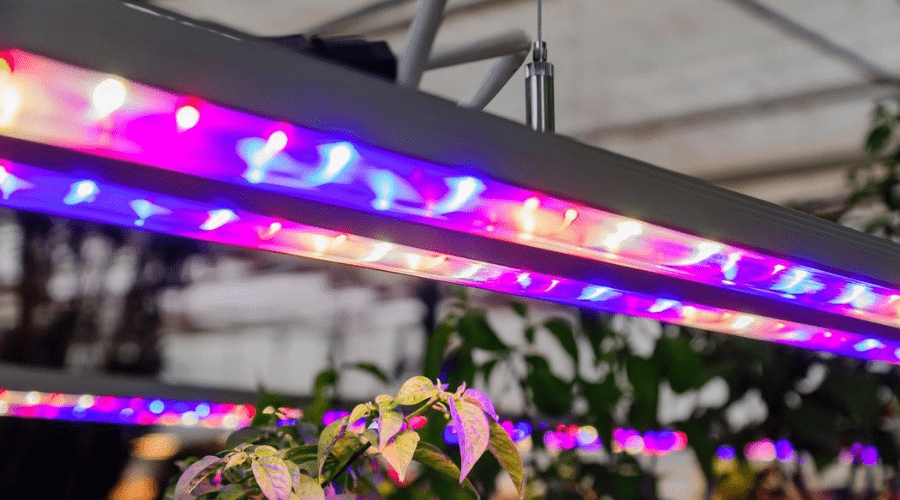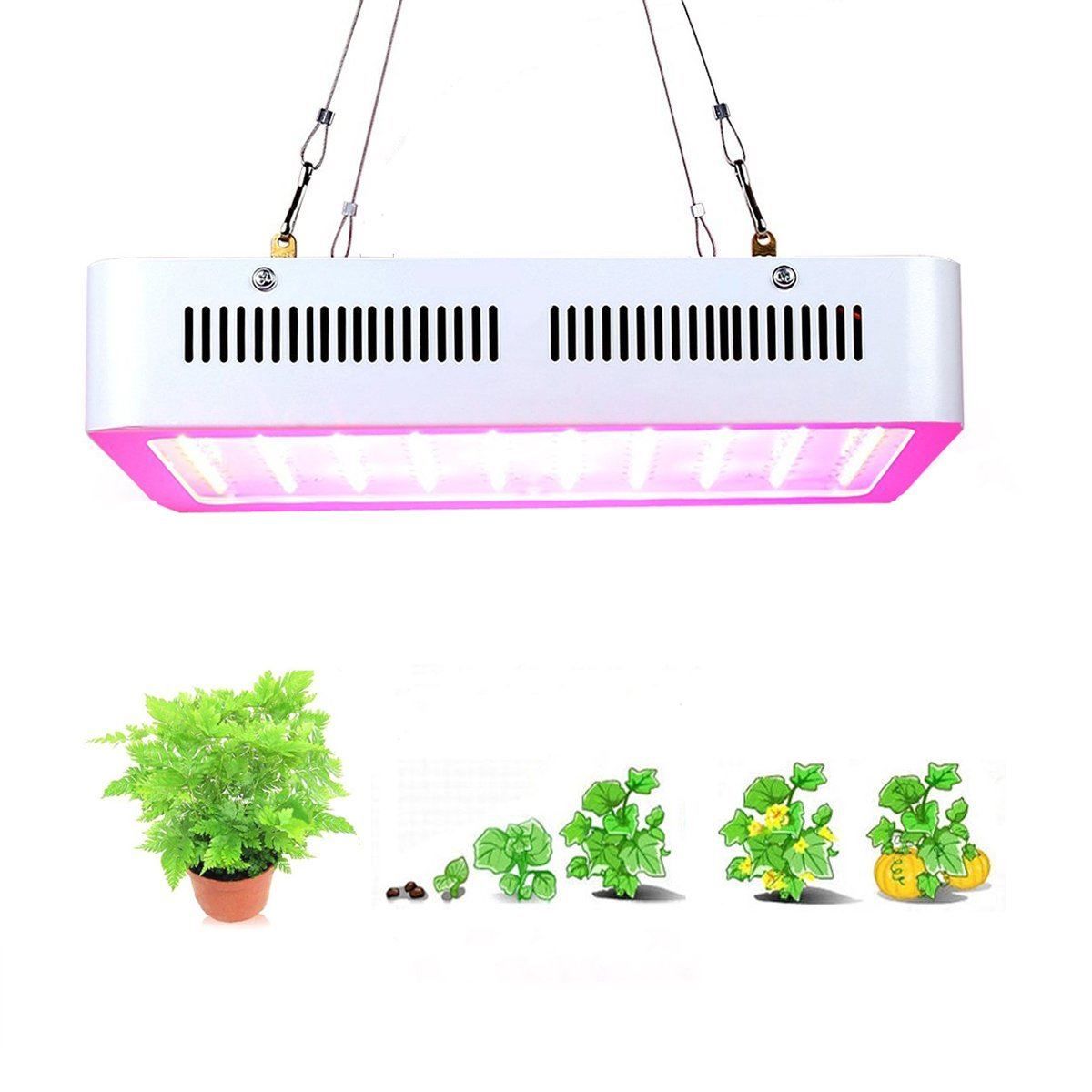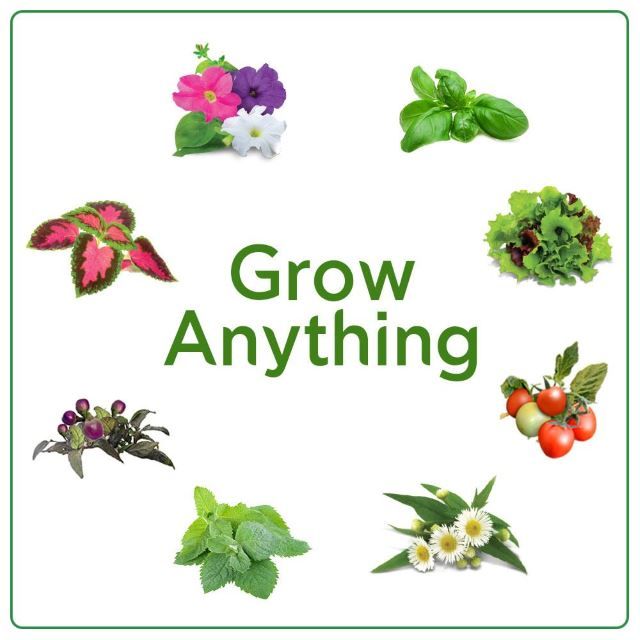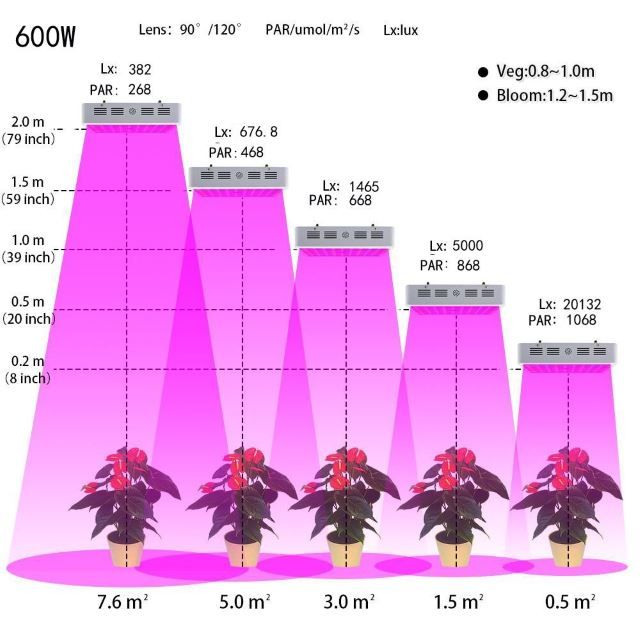In the world of horticulture, there’s always been one single source of light that’s best for plants: the sun. However, with the rise of hydroponic gardening and indoor gardening, in general, artificial lights have been acceptable substitutes, but the old solutions weren’t perfect. They either put out too much heat or cost too much to run. It’s a new gardening world today, though, now that high quality LED grow lights are on the market. The question is, which ones are worth your investment? That’s where an LED grow light guide like this one is going to come in handy for you.
LED Grow Lamp Comparison Chart
|
PRODUCT |
FEATURES |
||
|---|---|---|---|
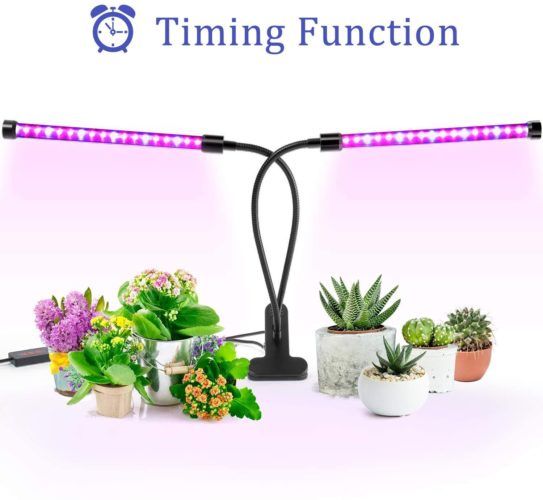
|
ANKACE 40W DUAL HEAD TIMING 36 LED 5 DIMMABLE LEVELS PLANT GROW LIGHTS |
|
|
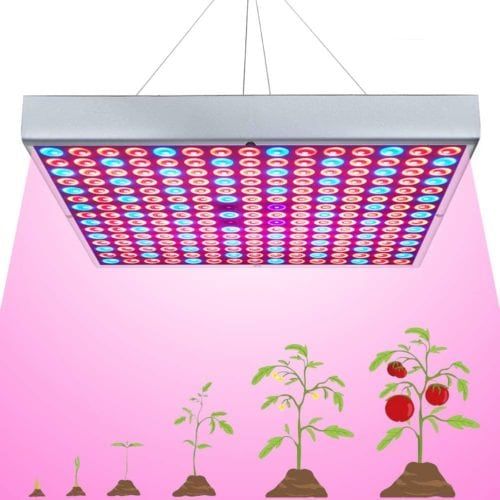
|
|
||
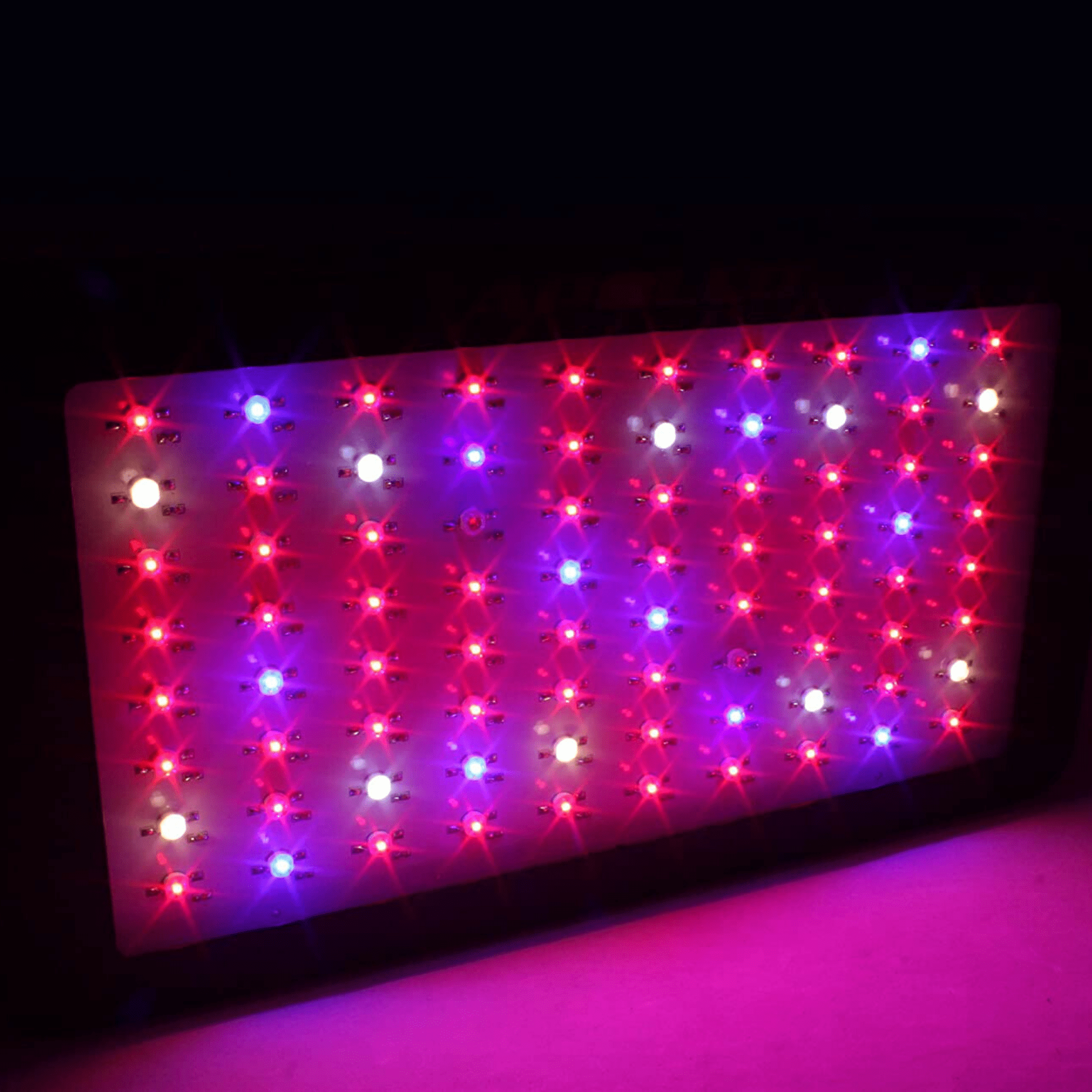
|
Apollo Horticulture GL80LED Full Spectrum 240W LED Grow Light |
|
|
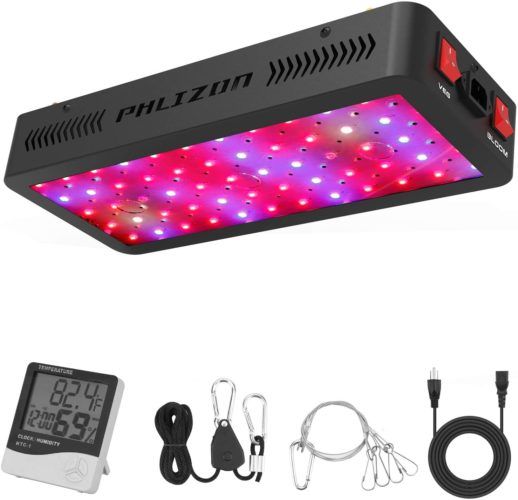
|
|
||
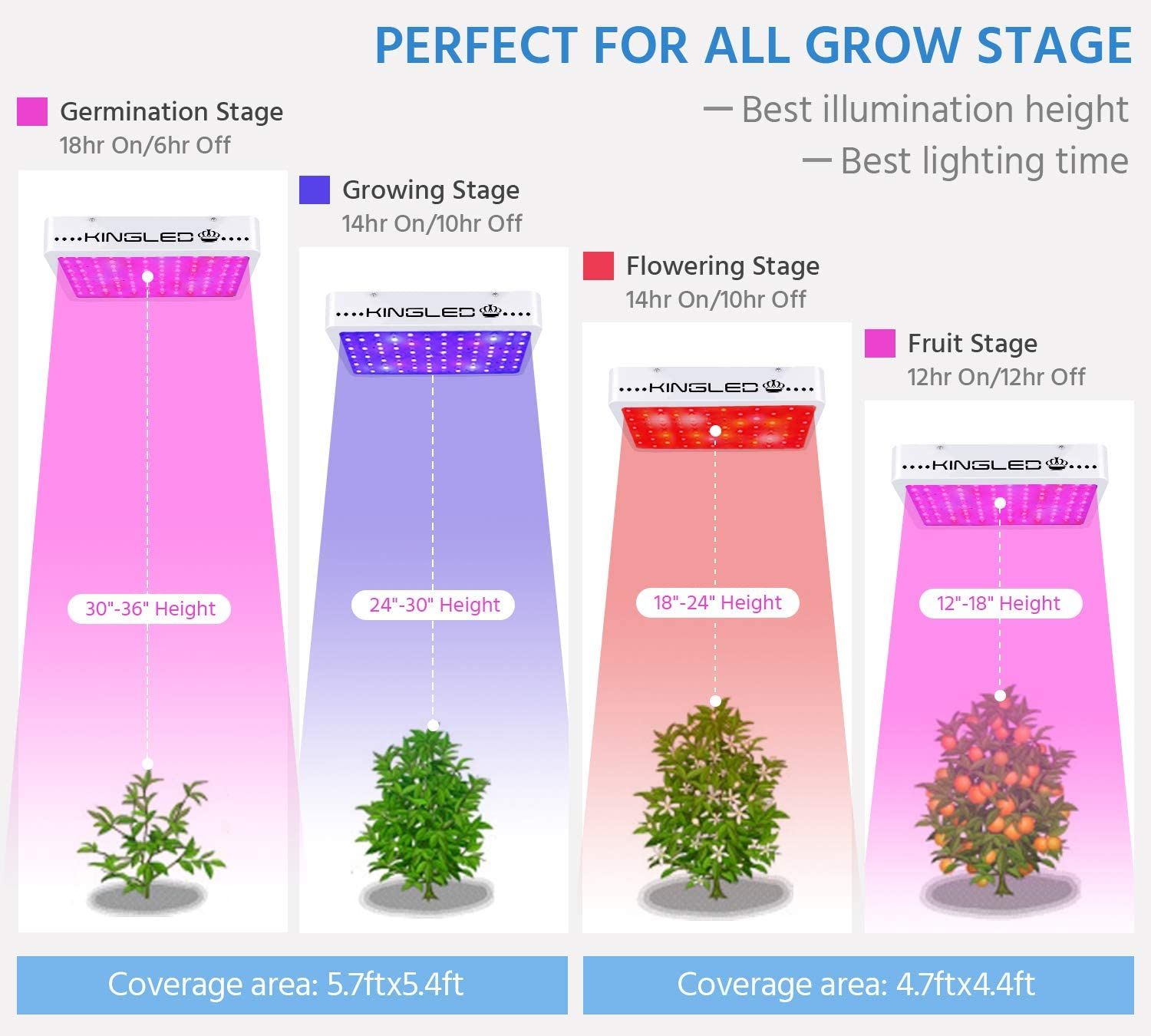
|
|
How LED Grow Lights Work
If LED lights for growing are new to you, or if you're thinking of making the switch from high-pressure sodium (HPS) or HID grow lamps, here’s a quick rundown of how they work. Plants need red light to help with photosynthesis. It’s this light waveband that encourages plants to grow long stems, big leaves, and it can help with germination and flowering.
Also important are blue lights. These help with stems and leaves, but if there’s too much blue light, it can inhibit the growth. Plants grown indoors need a bit of blue light, which also helps with the leaf thickness and the amount of chlorophyll the plant contains.
Green light is usually considered less important, but a little bit added to the necessary reds and blues can help with photosynthesis.
Finally, white light isn’t necessary. You can achieve a white light with a an RGB (red, green, blue) blend of lights, but test results have shown it isn’t needed. And because indoor plants don’t need much green, you’ll notice most LED lights for growing have a purplish glow to them.
Grow Light History
The testing of LEDs on plant growth started back in the 1980s at the University of Wisconsin. In fact, NASA funded the tests, and what they found is that LEDs offer the most desirable conditions for growing plants indoors. No ballast is required, so it’s much easier for anyone to grow plants, and it’s less expensive. You can choose the colors you need, which means you can provide a blend of red, blue, and green lights to your plants to give them what they need for photosynthesis. And, in comparison to other light sources, LEDs produce significantly less heat, so you can increase the intensity of the light by placing them closer to crops. Although NASA learned this about LEDs decades ago, the LED lights are just now becoming more popular, more affordable, and easier to procure.
What Can You Grow Using An LED Grow Light?
Most of the articles out there, you’ll find out LED light fixtures have something to do with hydroponic farming, especially for cannabis in the states where it’s legal to grow, sell, and consume, and they’re not taking any chances – they’re growing their weed indoors using good LED chip-on-board (COB) lights.
Beyond growing crops of weed, though, you can sprout seedlings for a salsa garden. You can grow pepper plants and tomatoes. Set up a bunch of herbs and give it some purple glow, and you’ll be cooking with fresh parsley, dill, sage, and thyme in no time. In fact, there’s a popular indoor gardening appliance out there that have been using LEDs to help you grow herbs and cherry tomatoes for years now. The only difference here is that you can buy as many LED lights for growing as you need and turn a whole extra room into an indoor garden. It’s a great alternative and a good bet for the money.
As of 2020, LED grow lamp sales have increased due to quarantine hobbyists and work-from-home houseplant enthusiasts during the COVID-19 pandemic.
You may want to set timers for the lights, though, because you don’t want to keep the artificial sun on all day and night long. You have to give your plants some time to rest in the coolness and darkness.
Features of the Best LED Grow Lights
When choosing an LED light for your plants’ growth, you want to checkout those that are rated highly for their light spectrum, low heat, high output, and low energy consumption. Brands don’t usually matter much here, but there are some features you can keep an eye out for to ensure you’re getting good LED lights.
Heat Sink
Your computer has a heat sink. If you ever open it up, you’ll see a silver block there that’s meant to absorb the extra heat. It’s necessary to prevent frying your boards. And like your computer, your LED light should include a heat sink to absorb any extra heat. These usually come standard on grow lights.
Cooling Features
Most LED light bulbs include fans to help keep things cool to prevent burning out anything. Some even cool using water, but those are rarer in the affordable models. You definitely want to buy one that includes fans.
High Wattage
The energy output is important because you want intense light to help your plants grow big, strong, and quickly, but you’re going to have a higher electricity bill no matter what. The good news is that LEDs are energy efficient, so it’s going to be less than any other lighting source (other than the sun, duh). Higher energy output shouldn’t scare you because it helps offset wattage loss. A grow light that consumes 600 watts sounds like it’s going to be pricey, but it outputs 6,000 lumens, making it worth it.
Warranty
If anyone has ever told you to ignore the warranty, ignore them! A warranty on something like an LED light is important. These are tiny bulbs and they’re manufactured and shipped out quickly, so there’s a chance you could get a defective unit. It’s nice to know that a company has your back in case anything goes wrong. And the longer the warranty, the better. Make sure you aren’t buying any old LED lighting system. There are plenty of them out there meant for general use, and those won’t work for growing plants. So, choose carefully. The reviews below are only of LED lights – and they’re the best out there.
Brands
While there are a great many LED light manufacturers now, there are a few standouts, including Horticulture Lighting Group (HLG), Kind LED, Black Dog and Mars Hydro.
LED Grow Light Reviews
Best Small LED Light for Single Plants or Tiny Spaces
This is a flexible, easy-to-use pair of small LED grow lamp bars for use in small areas or for a few small plants or seedlings. The adjustable positioning and dimmable lights (5 levels of brightness) provide maximum coverage for those without space for a grow room or large hanging fixture.
- Coverage Area: 1-2 square feet for each lamp
- Lifespan: 50,000 hours
- Warranty: 1 year limited
- Might be too small or not strong enough for some purposes
|
|
Finding a small LED light is easier than you think. The Ankace 40W Dual Head 40W Grow Light is among the most convenient choices if you’re looking to grow a couple pots of plants or give a couple of seedling trays a boost. Not only does it take up very little energy, it's even more versatile than most because of its dual gooseneck lamps, so you can adjust the LED height as your plants start stretching out and up. With three timer and five dimmer options, a 2:1 ratio of red to blue spectrum LED lights, and clocking in at less than one pound in weight, there is no better choice for the small space gardener.
Best LED Grow Light for Small Herb Gardens, Microgreens, or a Few Flowers
Widely used for grow tent, grow box, grow chamber, grow room, hydroponics, aquaponics, greenhouse, vertical farm, indoor gardening and so on. It is suitable for almost all the plants, such as herbs, succulents, vegetables, bonsai tree, houseplant, orchid, lemon, chili, tomatoes, algae etc., and compactly sized for flexible applications.
- Coverage Area: 4 square feet
- Lifespan: 50,000 hours
- Warranty: 12 months, plus 30-day satisfaction or return guarantee, 100% money back
- Might be too small or not strong enough for some purposes
|
|
Don't let the small size of this LED grow lamp fool you into thinking it can't get the job done. It has 225 LEDs, and with wavelengths from 390nm to 730nm, it gives out the targeted peak wavelength that plants most desire from natural sunlight. At only 45 watts, and only about 12 inches long, you aren’t going to provide enough “sunlight” for a huge indoor garden, but a smaller one will likely be happy under this LED light for growing. Most people report that seedlings and small plants, like herbs, did really well under this grow light. As one reviewer pointed out, this might be a good choice for a closet grower, but if you’re trying to cultivate crops of plants, you’re going to need several of these, or something more powerful and larger. Those who have had to deal with defective units were able to get replacements quickly and easily from the manufacturer, which is impressive.
Best Moderate LED Light for Small Indoor Gardens or Plants
This is a flexible, all-around LED grow light for any indoor space that needs 5-7 square feet of coverage. With variable hanging height, quiet fan, adjustable spectrum (430nm, 475nm, 620nm, 630nm, 660nm, 730nm & White), suitable for grow tents, greenhouses, H2O systems and in most other hydroponic systems.
- Coverage Area: 3 x 3 feet
- Lifespan: 50,000 hours
- Warranty: 2 year limited
- Complaints about longevity of light panels
|
|
Indoor plants require a good blend of red and blue lights to grow up to their full potential, and this Apollo Horticulture 240W LED light offers a good spectrum of light. The 300 watts that you get from this moderately-sized grow light panel can cover about a 2-foot-by-2-foot area with no problem. As good as this light is, it may have too much blue for your plant’s flowering cycle. Many users of this LED light prefer to use it during the first few stages of a plant’s life, and then switch to something with more red light to help with the blooms. The on-board fans keep the unit cool, which is helpful, even though LEDs don’t produce a ton of heat. Those fans, though, might be noisy, or at least louder than you may expect. Customer support is above par, so if you have any issues with your unit, don’t hesitate to contact them – and you have three years of protection with the long warranty.
Best LED Grow Lamp for Big Crops in Small Spaces
This light contains every wavelength of light that plants need. With adjustable settings, it provides veg and flowers alike, at all stages of growth, with everything they need from natural sunlight.
- Coverage Area: 1.5 x 1.5 feet
- Lifespan: 50,000 hours
- Warranty: 2 year, plus 30-day money back guarantee
- Complaints about longevity of light panels
|
|
A powerful grow light needs more care by the manufacturer to increase heat dissipation to prevent burn outs. Luckily, this LED light packs a powerful 600-watt punch and includes two on-board fans to help keep things cool—even while providing that intense full spectrum light that your plants crave. The fans are reportedly excellent for their size and not overly noisy. The core coverage area is small, but with thousands of positive ratings and an affordable price point for the wattage, this is a solid choice for small tent or indoor growing. Best of all, this lamp comes with a humidity monitor built in, as well as two-switch function for easily switching between spectrums.
Best for Greenhouses and Larger Crops
KingLED LED grow light provides full spectrum lighting from 380 nm to 780 nm (including UV + IR) of natural light for plants needed of all growing stages from vegetables to flowers. For its size, this lamp provides exceptional performance... and if it doesn't, you can get your money back.
- Coverage Area: 5.7 x 5.4 feet
- Lifespan: 100,000 hours
- Warranty: 3 years Professional Service and free return for 90 days
- Does not perform as well as a 1200W traditional light
|
|
The King Plus 1200w LED Grow Light offers a full spectrum of light that hydroponic and indoor gardens need to grow tall, bushy, and strong. The manufacturer claims this grow light is ideal for a 4x4-foot space, but it covers more at dimmer levels if you raise it. Reviewers report grow areas exceeding 5 feet wide and long. Plus, this little artificial sun is probably better for sprouting seeds or for young plants. The units are very quiet, durable, and don't seem to dim in intensity or dull in color over time.
THE BOTTOM LINE
Choosing the LED grow light that’s best for you really depends on what you need it for. A small bulb with low-wattage LEDs can be plenty for your little herb garden, but if you have a huge crop of cannabis, you might need something more powerful. The most flexible of our top picks is the Phlizon 600W LED Plant Grow Light, which offers a good balance of power and light to help indoor plants grow. It may not have enough red in it to help with flowering, but it is a good grow light to get smaller plants started. You can’t beat its warranty, which helps protect your purchase in case of any defects. Plus, it’s an affordable option if you need to grow plants even in the winter.

